#e1dad0 Color Information
In a RGB color space, hex #e1dad0 is composed of 88.2% red, 85.5% green and 81.6% blue. Whereas in a CMYK color space, it is composed of 0% cyan, 3.1% magenta, 7.6% yellow and 11.8% black. It has a hue angle of 35.3 degrees, a saturation of 22.1% and a lightness of 84.9%. #e1dad0 color hex could be obtained by blending #ffffff with #c3b5a1. Closest websafe color is: #cccccc.
-
- R 88
- G 85
- B 82
-
- C 0
- M 3
- Y 8
- K 12
● #e1dad0 color description : Light grayish orange.
#e1dad0 Color Conversion
The hexadecimal color #e1dad0 has RGB values of R:225, G:218, B:208 and CMYK values of C:0, M:0.03, Y:0.08, K:0.12. Its decimal value is 14801616.
| Hex triplet | e1dad0 | #e1dad0 |
|---|---|---|
| RGB Decimal | 225, 218, 208 | rgb(225,218,208) |
| RGB Percent | 88.2, 85.5, 81.6 | rgb(88.2%,85.5%,81.6%) |
| CMYK | 0, 3, 8, 12 | |
| HSL | 35.3°, 22.1, 84.9 | hsl(35.3,22.1%,84.9%) |
| HSV (or HSB) | 35.3°, 7.6, 88.2 | |
| Web Safe | cccccc | #cccccc |
| CIE-LAB | 87.341, 0.669, 5.757 |
|---|---|
| XYZ | 67.506, 70.705, 69.762 |
| xyY | 0.325, 0.34, 70.705 |
| CIE-LCH | 87.341, 5.795, 83.372 |
| CIE-LUV | 87.341, 4.619, 8.496 |
| Hunter-Lab | 84.086, -3.848, 9.67 |
| Binary | 11100001, 11011010, 11010000 |
Color Schemes with #e1dad0
Alternatives to #e1dad0
Below, you can see some colors close to #e1dad0. Having a set of related colors can be useful if you need an inspirational alternative to your original color choice.
#e1dad0 Preview
This text has a font color of #e1dad0.
<span style="color:#e1dad0;">Text here</span>This paragraph has a background color of #e1dad0.
<p style="background-color:#e1dad0;">Content here</p>This element has a border color of #e1dad0.
<div style="border:1px solid #e1dad0;">Content here</div>.text {color:#e1dad0;}.background {background-color:#e1dad0;}.border {border:1px solid #e1dad0;}Shades and Tints of #e1dad0
A shade is achieved by adding black to any pure hue, while a tint is created by mixing white to any pure color. In this example, #010101 is the darkest color, while #f8f6f4 is the lightest one.
-
#010101
#010101rgb(1,1,1) -
#0d0b08
#0d0b08rgb(13,11,8) -
#191510
#191510rgb(25,21,16) -
#251f17
#251f17rgb(37,31,23) -
#312a1f
#312a1frgb(49,42,31) -
#3d3427
#3d3427rgb(61,52,39) -
#493e2e
#493e2ergb(73,62,46) -
#554836
#554836rgb(85,72,54) -
#61523e
#61523ergb(97,82,62) -
#6d5c45
#6d5c45rgb(109,92,69) -
#79674d
#79674drgb(121,103,77) -
#857155
#857155rgb(133,113,85) -
#917b5c
#917b5crgb(145,123,92)
-
#9c8564
#9c8564rgb(156,133,100) -
#a48f70
#a48f70rgb(164,143,112) -
#ac987c
#ac987crgb(172,152,124) -
#b3a188
#b3a188rgb(179,161,136) -
#bbab94
#bbab94rgb(187,171,148) -
#c2b4a0
#c2b4a0rgb(194,180,160) -
#cabeac
#cabeacrgb(202,190,172) -
#d2c7b8
#d2c7b8rgb(210,199,184) -
#d9d1c4
#d9d1c4rgb(217,209,196) -
#e1dad0
#e1dad0rgb(225,218,208) -
#e9e3dc
#e9e3dcrgb(233,227,220) -
#f0ede8
#f0ede8rgb(240,237,232) -
#f8f6f4
#f8f6f4rgb(248,246,244)
Tones of #e1dad0
A tone is produced by adding gray to any pure hue. In this case, #dbd9d6 is the less saturated color, while #ffdfb2 is the most saturated one.
-
#dbd9d6
#dbd9d6rgb(219,217,214) -
#ded9d3
#ded9d3rgb(222,217,211) -
#e1dad0
#e1dad0rgb(225,218,208) -
#e4dbcd
#e4dbcdrgb(228,219,205) -
#e7dbca
#e7dbcargb(231,219,202) -
#eadcc7
#eadcc7rgb(234,220,199) -
#eddcc4
#eddcc4rgb(237,220,196) -
#f0ddc1
#f0ddc1rgb(240,221,193) -
#f3ddbe
#f3ddbergb(243,221,190) -
#f6debb
#f6debbrgb(246,222,187) -
#f9deb8
#f9deb8rgb(249,222,184) -
#fcdfb5
#fcdfb5rgb(252,223,181) -
#ffdfb2
#ffdfb2rgb(255,223,178)
Color Blindness Simulator
Below, you can see how #e1dad0 is perceived by people affected by a color vision deficiency. This can be useful if you need to ensure your color combinations are accessible to color-blind users.
